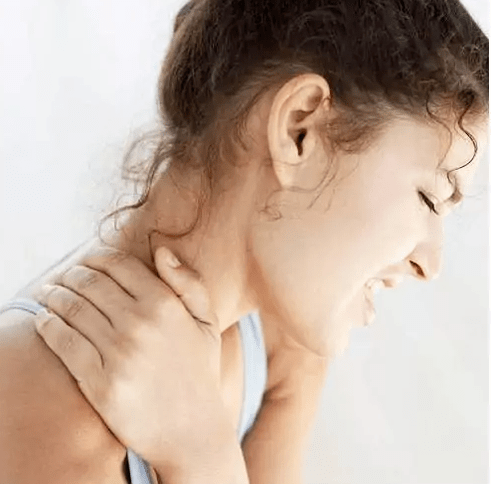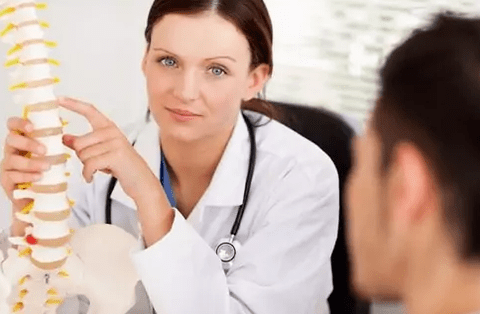Another serious disease of our time is osteochondrosis.Its first signs can appear in his youth, when suddenly, with a long sitting at the computer or above the notebook, suddenly, at first, it begins to be just discomfort, then pain in the seventh cervical vertebra.Soon the pain becomes such that it is difficult to turn your head or “tear” from the pillow.After a few days, exacerbation usually passes, and before the next attack can pass several months, maybe years.However, do not flatterize!The first attack is a serious warning that the mechanism of destructive dystrophic changes in your body has already been launched.To understand this, let's figure out what osteochondrosis is and why you need to begin to treat it from the very first symptoms.

What is osteochondrosis?
Osteochondrosis is complex dystrophic changes in the spine in which such stages can be distinguished:
- Dystrophic changes in the cartilage tissue of the intervertebral discs, as a result of which movements become constrained and cause feelings of discomfort (stage I)
- Drink deformation and gradual decrease in the intervertebral distance (stage II).
- The formation of intervertebral hernia (stage III)
- The formation of spikes (osteophytes) and the ossification of ligaments, making the movement very difficult and painful (stage IV)
The formation of a hernia is a complex process to which entire sections will be devoted.However, now you should know that such a serious disease is happening if osteochondrosis does not treat in time.Therefore, so that you have an idea of what a hernia is, we will tell in two words about it.To do this, you will have to turn to anatomy again for a short while, and remember the device of the spine and spinal disk.
Distrophy of the spinal disk leads to a weakening of its fibrous ring and the displacement of the main shock absorber of the disk (nucleus), as a result of which the formation of bulge (protrusion), or the so-called “pre-gryzh”, occurs.Then, under the influence of the load, sooner or later there is a rupture of the ring and the nucleus output outside the disk - the hernia itself forms directly, which causes severe pain when the radicular nerve is damaged.
In order to identify the presence of osteochondrosis, especially in the early stages, when curvature does not give obvious external signs, also determine its orientation and degree, it is necessary to make magnetic resonance imaging.This diagnostic method does not cause any harm to human health, unlike an X -ray, also allows you to accurately determine the angle of deviation.Based on the description of the radiologist and MRI images, the specialist builds the correct treatment plan for the patient, which, of course, is the strengthening of the muscle corset.
When choosing a clinic for undergoing an MRI of the examination, it is necessary, first of all, to study the power of the equipment used and the qualifications of the clinic employees.
Types of spinal osteochondrosis
Osteochondrosis can be of several types:
- The cervical is the most common, as both young and elderly
- Thoracic - is relatively rare
- Lumbar - develops after 40 years
- Sacral - usually switching from lumbar
- Common - affects several departments or even the entire spine
In the same sequence, the spontaneous development of this disease often occurs: starting from the upper cervical vertebrae and ending with sacral and Coccygeal.
But it happens that the type of osteochondrosis is associated with human activity.So, the cervical is usually common among students, designers and all other representatives of “brain” professions, in which the neck for a long time is in a constant tense state.Employees of physical labor, athletes-dejeethoids from youth can have lumbar osteochondrosis, taxi drivers, shoemakers and other representatives of “sitting” specialties-a sacral plus with a lumbar with a cervical-a whole set!Hard of osteochondrosis is also often observed in Vete, who is almost all day on his feet, since it is the sacrum that holds our body in an upright position, and the whole load falls on it during the standing or walking process
The causes of the appearance and development of osteochondrosis
However, osteochondrosis is not only a disease of a sedentary lifestyle, improper posture or a consequence of weight lifting.There are many more factors and reasons for the origin of this ailment.I will highlight only the main:
- Incorrect nutrition with insufficient amount of protein and increased sugar and fats
- Violated metabolism and hormonal imbalance
- Infectious diseases
- Hypothermia
- High weight and obesity
- Spinal injuries
- Age bone degeneration
- Hereditary diseases
- Stress
The main symptoms of osteochondrosis
Cervical osteochondrosis:
- Pain in the neck and in the head (can give under the shoulder blade, to the sternum and hand)
- Dizziness, especially when changing the position in the head
- Numbness in areas of the neck, face, tongue, submarine area
Thoracic osteochondrosis:
- Thoracic pain that can intensify on inhalation and when moving
- Sensation of numbness in the chest
Lumbar-cross:
- The pain in the lower back (can be acute or acute), which gives to the legs, and the localization of pain in the legs can move along the entire length of the limb
- Legs (violation or even loss of sensitivity)

Pain for osteochondrosis is specific neurological.So, headache, dizziness, numbness or legs in the legs tend to take as direct manifestations of diseases of the head or legs, although these can be symptoms of vertebral osteochondrosis.Therefore, if you notice something anxious in your well-being, coinciding with above the listed signs, be sure to visit a neuropathologist.The doctor, having examined, with suspicion of this disease, will necessarily prescribe an X -ray examination.
The main methods of treatment of osteochondrosis
The most effective removal of back pain:
- Therapeutic gymnastics (exercises for back pain)
- MLS laser (after the 2nd session, the pain passes)
- Hivamat (a unique procedure that relieves pain immediately, but we must be just like 2-3 times.)
The very elimination of the causes of the progression of osteochondrosis is the main method of its treatment and prevention.
Prevention and non -drug treatment
This is first of all:
- Active (mobile) lifestyle and sports
- Normal nutrition with a protein diet excluding fats and sugar
- Medical physical education (exercise therapy) with an individually selected set of exercises for each type of osteochondrosis
- Physiotherapy (magnetot therapy, ultrasound treatment, electrophoresis, laser therapy)
- Massage, manual and reflexology
However, such a conservative method of treatment is suitable for prevention, to prevent the progression of osteochondrosis and not in the active period of the disease.But how to treat this ailment, if it is launched, its manifestations are obvious and a person has an exacerbation stage, namely: precisely:
- pain and elevated temperature
- limited, which are given with great difficulty, movements
In this case, exercise therapy and physiotherapy are categorically contraindicated and exclusively drug methods are used.
Medication methods of treatment
First of all, you need to stop pain and relieve the inflammatory process in the nervous spine, which is irritated.To this end, they are appointed:
- non -steroidal anti -inflammatory drugs (NSAIDs);Corticosteroids, glucocorticoids IDR.(they are prescribed if the operation of NSAIDs is not enough)
- novocaine blockade (with severe pain)
- preparations for removing muscle spasm;
- painkillers, gels and creams;
The second phase of treatment includes:
- The use of vasodilators: osteochondrosis is always adjacent to narrowing of blood vessels and oxygen starvation of the brain (hence headaches and dizziness)
- The appointment of funds that soothe the nervous system: patients with this ailment are always alarming and suspicious, in most cases they are very frightened by the first attacks of the disease.
- Treatment of concomitant phenomena - these can be hypertension and violation of cardiac activity
- Treatment must be prescribed to you a neuropathologist, in the form of droppers, injections and tablets
Do not try to treat the disease yourself!
At the end of the acute period and normalization of well -being, return to non -drug preventive treatment methods: exercise therapy, massage and physiotherapy in the absence of contraindications for them.
Health to you!


























